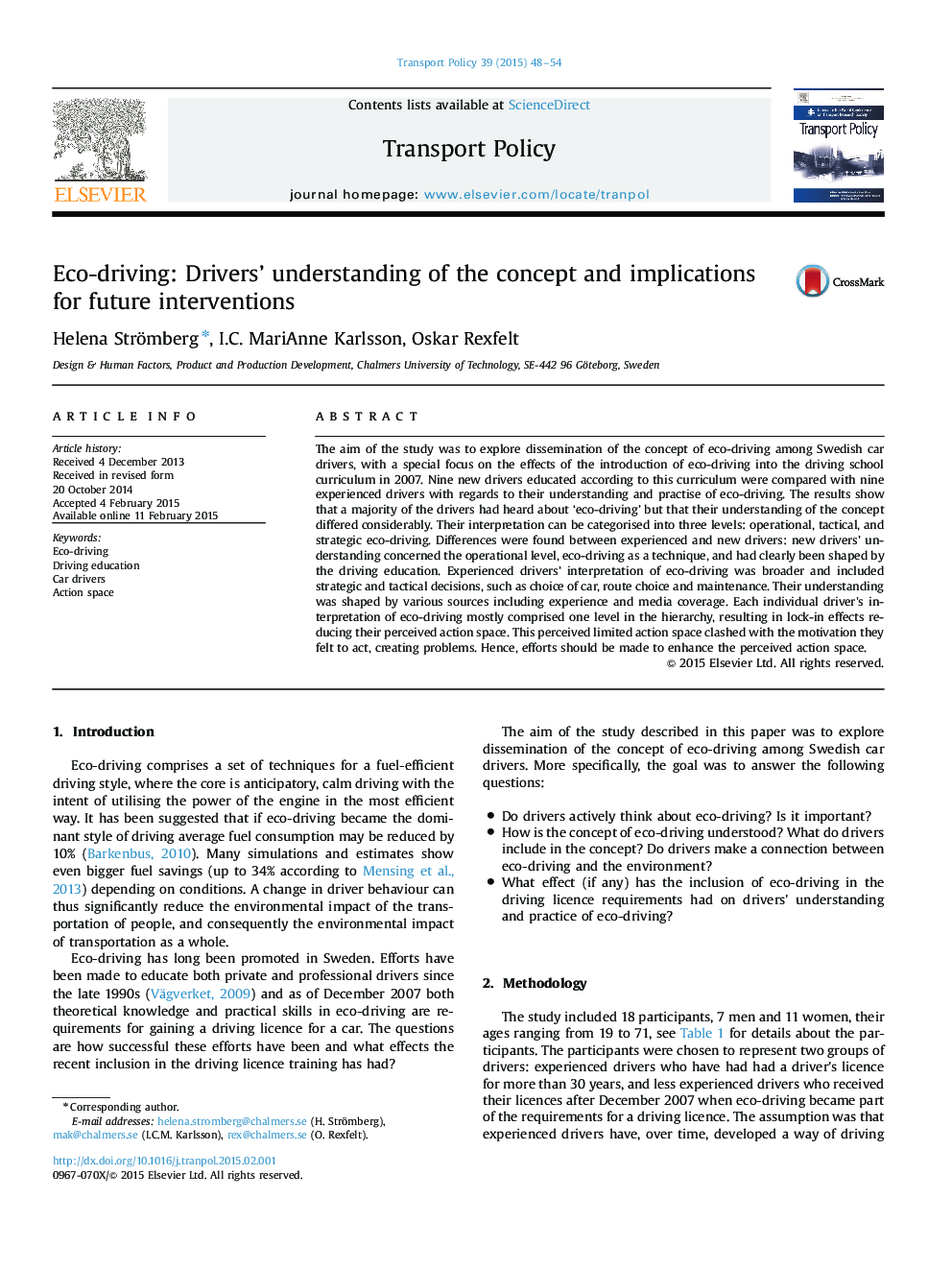| Article ID | Journal | Published Year | Pages | File Type |
|---|---|---|---|---|
| 1064902 | Transport Policy | 2015 | 7 Pages |
•Understanding and practice of eco-driving vary between new and experienced drivers.•Eco-driving understanding categorised into 3 levels: operational, tactical, and strategic.•Individual, narrow interpretations result in limited action space.•Policymakers should focus on all levels to expand individual's perceived action space.
The aim of the study was to explore dissemination of the concept of eco-driving among Swedish car drivers, with a special focus on the effects of the introduction of eco-driving into the driving school curriculum in 2007. Nine new drivers educated according to this curriculum were compared with nine experienced drivers with regards to their understanding and practise of eco-driving. The results show that a majority of the drivers had heard about ‘eco-driving’ but that their understanding of the concept differed considerably. Their interpretation can be categorised into three levels: operational, tactical, and strategic eco-driving. Differences were found between experienced and new drivers: new drivers’ understanding concerned the operational level, eco-driving as a technique, and had clearly been shaped by the driving education. Experienced drivers’ interpretation of eco-driving was broader and included strategic and tactical decisions, such as choice of car, route choice and maintenance. Their understanding was shaped by various sources including experience and media coverage. Each individual driver's interpretation of eco-driving mostly comprised one level in the hierarchy, resulting in lock-in effects reducing their perceived action space. This perceived limited action space clashed with the motivation they felt to act, creating problems. Hence, efforts should be made to enhance the perceived action space.
